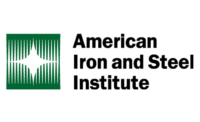The small project and fellowship requests are developed and submitted by project teams across the country. Each team includes a student, an academic advisor from the student’s academic institution and an industry advisor. Project selections are based on several factors, including: 1) the potential for long-term impact on the industry, 2) steel industry engagement and co-funding, and 3) anticipated results for the AISI standards development committees, the student and the academic institution.
The winning research proposals and academic institutions for 2022 are:
• “Behavior of Screw-Fastened Connections Through Insulation”—University of Massachusetts Amherst. This project will examine the behavior of screw-fastened connections through thick insulation, with the resulting predictive equations anticipated to replace the current provisions in AISI S310, North American Standard for the Design of Profiled Steel Diaphragm Panels. The results will allow designers of cold-formed steel framed buildings and metal building systems to design for increased capacity in insulated components, and will open the door for advancements in insulating technology that may provide a structural benefit for these screw-fastened connections.
• “Guidelines for Member-Level Analysis-Based Testing”—SUNY Polytechnic Institute. Validated high-fidelity computational modeling provides a reliable prediction of structural behaviors and saves significant costs when compared with full-scale experimental tests. This research will provide the necessary background work to pave the way for possible codification of testing by analysis in the AISI standards, making it easier for members of AISI’s standards development committees to advance a direct analysis of cold-formed steel members and explore an analysis-based test approach.
• ”Distortional Buckling Analytical Expressions for Cold-Formed Steel Framing”—University of North Texas. The requirement to predict the elastic distortional buckling of a cross-section can be an obstacle in the design of cold-formed steel members. This project aims to simplify the requirement to make it easier for designers to apply AISI S100, North American Specification for the Design of Cold-Formed Steel Structural Members, by developing analytical expressions for distortional buckling of C-Shapes utilized in cold-formed steel framing with and without standard punchouts. This, in turn, will simplify the strength prediction of members utilized in cold-formed steel framing, enabling greater clarity and efficiency in cold-formed steel framing design.
• “Local Buckling Analytical Expressions for Cold-Formed Steel Framing”—Johns Hopkins University. This project will address the same obstacle described in the previous paragraph but will instead focus on local buckling analytical expressions. The results will enable greater clarity and efficiency in cold-formed steel framing design.
“The research conducted through the Small Project/Fellowship Program since 2014 has advanced our knowledge of cold-formed steel behavior and established improved design methods for a variety of cold-formed steel applications,” said Jay Larson, P.E., F.ASCE, managing director of AISI’s Construction Technical Program. “By combining academic and industry expertise and sharing funding with several partners, the program has engaged academia, industry and students in unique opportunities for mentoring and research while delivering results to the industry in a cost-effective and efficient manner.”




